Vaccine Types

HPV
What is it?
Human papillomavirus (HPV) is the major cause of cervical and genital cancers and genital warts. The virus is spread through skin-to-skin, usually sexual, contact and can infect people at any age. Infection often occurs shortly after the beginning of sexual activity. There are more than 100 types of HPV. About 40 types of HPV can infect the genital areas of males and females. These HPV types can also infect the mouth and throat.
Why is it important?
Nearly all sexually active men and women will get HPV at some point in their lives, even those who only have sex with one person. Many people don’t know they’re infected, and most HPV infections clear on their own without causing serious problems. However, certain types of HPV can cause infections of the genitals of both males and females which can develop into health problems. According to the CDC, these include:
- Genital warts – About 360,000 persons in U.S. get genital warts each year.
- Cervical cancer – All cases of cervical cancer are caused by HPV. About 12,000 women in the U.S. get cervical cancer each year; roughly 4,000 women in the U.S. die from cervical cancer each year.
- Genital cancers (cancer of the vulva, vagina, penis, or anus) and oropharyngeal cancer (cancer of base of the tongue, tonsils and back of throat) – Each year in the U.S., HPV is thought to cause about 2,100 vulvar cancers, 500 vaginal cancers, 600 penile cancer, 2,800 anal cancers in women, 1,500 anal cancers in men, 1,700 orophayngeal cancers in women, and oropharyngeal cancers in men.
The majority of infections occur before age 25 and as many as 64% of adolescent girls in the U.S. are infected with a type of HPV. While your child may seem too young to be at risk for sexually transmitted infections, the vaccine is most effective before sexual activity begins. It is important to vaccinate before potential infection could occur. Research shows that vaccinating children against HPV does not increase the risk of sexual activity.
Progress
There are two vaccines licensed for use in the U.S., Gardasil and Cervarix. Both have been shown to protect against most cervical cancers in women. Gardasil also protects against genital warts and has been shown to protect against cancers of the anus, vagina and vulva. Only Gardasil is available for males.
The HPV vaccines protect against the viruses which cause the majority of cervical cancer in females, 70% of anal cancer and 90% of genital warts in both males and females. If a person has been infected with a type of HPV, vaccination protects against the strains the person has not been exposed to.
The HPV vaccine is part of the next generation of vaccines – safer and better at protecting your child. The vaccine does not contain any part of the virus which could cause disease, resulting in fewer side effects and eliminating any chance of infection from the vaccine.
Vaccine Recommendations
Routine vaccination is recommended for girls and boys aged 11-12, but can be started at 9 years of age. The HPV vaccine is administered in three doses, at 2 and 6 months after the initial vaccination.
Catch-up immunization is recommended for females 13-26 years of age (Cervarix or Gardasil) and males 13-21 years of age (Gardasil) who did not receive the vaccine when they were younger or did not complete the series.
Side Effects
As with virtually all immunizations, the most common side effect of vaccination is pain and swelling at the site of the shot. The HPV vaccine has not been associated with any major vaccine associated adverse events. For more information on the risks and benefits of the HPV vaccine, view this infographic, which is supported by verifiable data and resources.
Influenza
Influenza
Influenza (flu) is a highly contagious viral upper respiratory illness. Flu may be complicated by other risk factors, including pneumonia. [+] more
|
Hepatitis B
Hepatitis B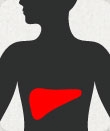
Hepatitis B virus (HBV) affects the liver and is primarily spread through blood and bodily fluids. Acute HBV infection can lead to chronic HBV and liver damage. [+] more
|
Polio
Polio
Poliomyselitis (polio) is an extremely contagious viral infection that affects the nerve cells of the brain stem and spinal cord and can lead to paralysis. [+] more
|
Diphtheria
Diphtheria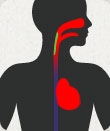
Diphtheria is a bacterial respiratory illness that causes a thick covering in the back of the throat, leading to breathing problems, paralysis, or heart failure. [+] more
|
Rotavirus
Rotavirus
Rotavirus is a viral infection of the digestive track, and is the most common cause of severe diarrhea and vomiting in infants and young children. [+] more
|
Pneumococcal
Pneumococcal
Pneumococcal bacteria live in noses and throats of people of all ages. Pneumococcus can infect the middle ear, sinuses, lungs, central nervous system and bloodstream. [+] more
|
Measles
Measles
Measles is a highly contagious viral respiratory infection that causes a total-body skin rash and flu-like symptoms. [+] more
|
Mumps
Mumps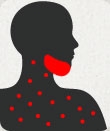
Mumps is a highly contagious viral infection that can affect many parts of the body. The hallmark sign of mumps is swelling of the salivary glands. [+] more
|
Rubella
Rubella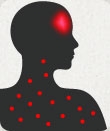
Rubella (German measles) is a contagious viral disease that can cause fever, rash, swollen glands and arthritis. Infection during pregnancy can lead to birth defects. [+] more
|
Tetanus
Tetanus
Tetanus (Lockjaw) is a bacterial infection that affects the nervous system and causes painful tightening of the muscles all over the body. It is spread through contact with contaminated surfaces. [+] more
|
Pertussis (Whooping Cough)
Pertussis (Whooping Cough)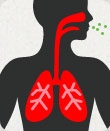
Pertussis (Whooping Cough) is a highly contagious bacterial respiratory disease. Pertussis causes violent coughing spells that make it hard to eat, drink or breathe, and is especially severe in young infants. [+] more
|
Chickenpox
Chickenpox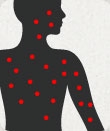
Varicella (Chickenpox) is a highly contagious viral infection characterized by a blistering rash that can cover the entire body. Complications include skin infections, pneumonia and brain swelling. [+] more
|
Hepatitis A
Hepatitis A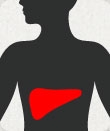
Hepatitis A (HAV) virus attacks the liver, and is spread through stool of an infected person by direct contact or by contaminated food or drink. [+] more
|
Meningococcal
Meningococcal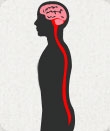
Meningococcal disease is a severe bacterial infection that causes inflammation of the membranes covering the brain and spinal cord (bacterial meningitis) and blood poisoning (septicemia), and requires immediate medical attention. [+] more
|
Hib
Hib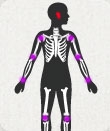
Haemophilus influenza type b (Hib) bacterium can infect a child’s skin, joints, bones and ears. Hib can lead to a variety of infections including pneumonia, bacteremia, and meningitis. [+] more
|
HPV
HPV
Human Papillomavirus (HPV) is the most common sexually transmitted virus in the United States. About 40 types of HPV can infect the genital areas of males and females. A few types can lead to cervical and other cancers. [+] more
|




